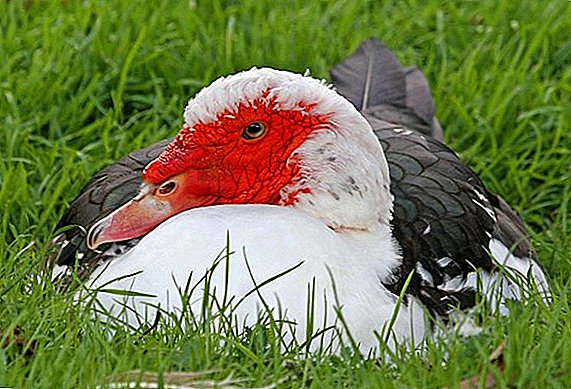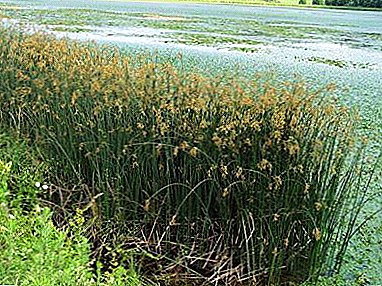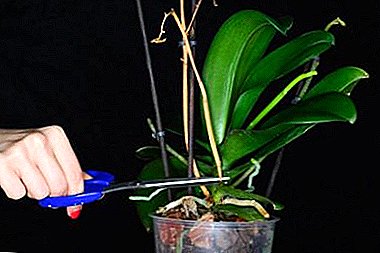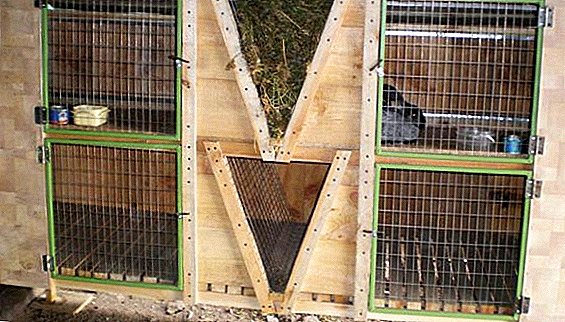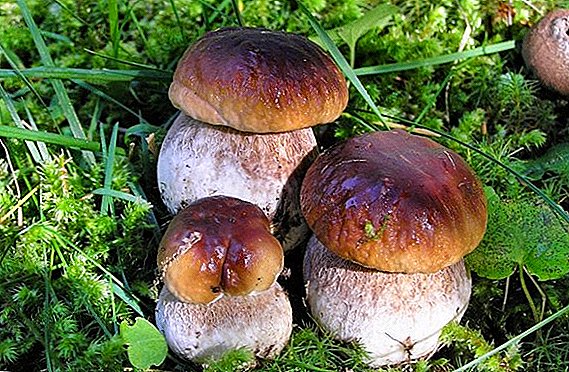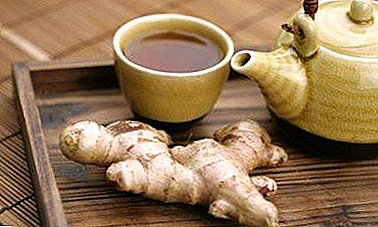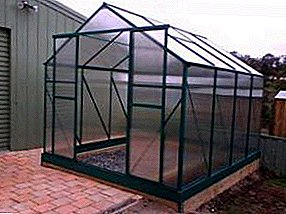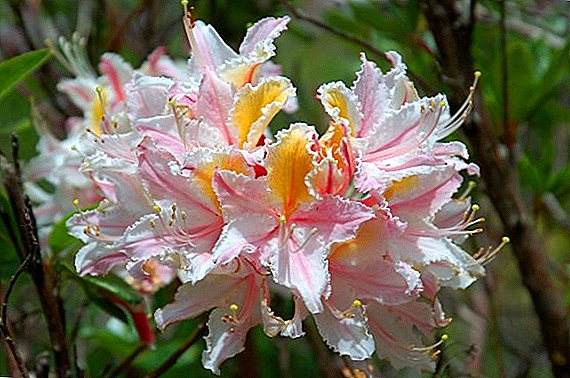 Rhododendrons belong to ornamental plants, therefore they are also attacked by pests and various diseases. Evergreens, planted in the sun, are more often attacked by ailments than those in the penumbra. The right agricultural technology increases the resistance of the plant, but the threat still remains. In the article, we will consider why the leaves of a rhododendron suddenly dry, the buds darken or the buds die off, as well as the main diseases that these ornamental shrubs are prone to.
Rhododendrons belong to ornamental plants, therefore they are also attacked by pests and various diseases. Evergreens, planted in the sun, are more often attacked by ailments than those in the penumbra. The right agricultural technology increases the resistance of the plant, but the threat still remains. In the article, we will consider why the leaves of a rhododendron suddenly dry, the buds darken or the buds die off, as well as the main diseases that these ornamental shrubs are prone to.
Trachemicomy wilt
The first symptom is the beginning of the process of rotting the root system. Fungi block the path to nutrients, as a result of which the vascular system of the plant suffers.
Rhododendron turns brown and dries, leaves are covered with petioles, and a gray-white mycelium appears on the bark. The root gradually dies. The remains of the plant continue to store the infection.
If the bush is sick, it is necessary to trim the infected areas and burn them without delay. Process the whole plant with Bordeaux liquid. Prevention is carried out by spraying the bushes and watering their root zone with a 0.2% solution of the preparation "Fundazol". 
Phytophthora rot
Late blight rot occurs due to the clogging of rhododendron or poorly conducted basal drainage. In addition, it is possible to bring phytophthora rot to the garden plot together with an unhealthy shrub purchased from a nursery. The disease begins withering foliage without the possibility of its recovery.
The root becomes brown and decays. Begin to turn yellow branches, and then the whole rhododendron. The root collar and base of the stems are covered with brown spots with a purple tint, on which dark gray fungus spores develop. The bush fades and dries, but its remnants and soil around retain the infection.
At the initial stage of the lesion with rhododendron, it is necessary to begin regular treatment with Bordeaux mortar, "Quadris" or "Fundazole" 0.2%. Heavier plants should be burned with roots and preventive maintenance of healthy bushes. 
Bacterial cancer
Bacterial cancer is manifested by the formation of round-shaped bulges on the roots and root collar of considerable size. These formations become darker and harder with time.
The bush slows in growth and loses the power of flowering. Further growths together with the root neck begin to rot, the plant dies, but its remnants continue to keep the infection.
Important! Other rhododendrons may become infected through planting material.
As with late blight, bushes exhibiting initial symptoms should be regularly treated with Bordeaux liquid or another similar drug. In case of severe damage, burn the plant along with the root system. 
Gray and other rot
Rhododendron can affect a variety of rot:
- gray
- seedlings and young seedlings;
- buds;
- root;
- dry white;
- dying off shoots.
Surface coating gradually dries and starts to crack. At high humidity, parts of the bush that are affected by necrosis are covered with a fluffy smoky gray spore coating. After a while, the drying out mycelium is filled with brown rounded sclerotia.
Did you know? In Nepal, rhododendron makes juice, tea, and even pickles its flowers.
It is possible to cope with rot only by cutting off the affected areas of rhododendron. For prophylactic treatment, spray the plant with a 0.2% solution of the preparation "Fundazol" and pour a root zone with it. Rot seedlings and young seedlings for rhododendron it starts with withering and ends with death. White spores of fungi or brown molds form on its leaves, and the surface is covered with threads resembling cobwebs.
Rot seedlings and young seedlings for rhododendron it starts with withering and ends with death. White spores of fungi or brown molds form on its leaves, and the surface is covered with threads resembling cobwebs.
Shoots, which began to die, sprinkle with crushed charcoal or powder of the drug "Fundazol." In addition, for the purposes of prophylaxis, it is possible to treat with a 0.2% solution of the preparation "Fundazol". Buds rot The buds turn brown and die off, after which the mycelium grows into branches. To limit the development of the disease by removing dark buds and dry shoots. While the plant lives during the growing season, every two weeks spray it with drugs that include copper.
Buds rot The buds turn brown and die off, after which the mycelium grows into branches. To limit the development of the disease by removing dark buds and dry shoots. While the plant lives during the growing season, every two weeks spray it with drugs that include copper. Dying off shoots threatens shrubs growing in the shade. Buds at the top of the bush will not bloom. Instead, their color will turn brown and the process of dying will begin. Following them, the leaves will begin to curl up, acquire a brown color and dry. With a strong defeat the plant will die. The disease can begin with the drilling of leaves on some shoots. Then they will start to dry, after which the entire escape will die.
Dying off shoots threatens shrubs growing in the shade. Buds at the top of the bush will not bloom. Instead, their color will turn brown and the process of dying will begin. Following them, the leaves will begin to curl up, acquire a brown color and dry. With a strong defeat the plant will die. The disease can begin with the drilling of leaves on some shoots. Then they will start to dry, after which the entire escape will die.
To cope with the death of shoots by burning the affected foliage and shoots. As soon as the rhododendron fades, it should begin its regular (every two weeks) treatment with copper-based preparations. Root rot affects the roots and stems at the base. But first, the foliage fades and dries without any reason. Next, the kidneys become brown in color and die off. Immediately before the death of rhododendron, the root system becomes brown and rotten.
Root rot affects the roots and stems at the base. But first, the foliage fades and dries without any reason. Next, the kidneys become brown in color and die off. Immediately before the death of rhododendron, the root system becomes brown and rotten.
To cope with the disease, it is necessary to burn the affected areas of the plant or completely the whole sick bush. It is possible to protect rhododendron from root rot. Maintain the acidity of the soil at the level that is needed specifically for your grade, and follow the rules for watering.  Dry white rot wraps around the root neck of the plant and looks like a gray-white ring. The lesion is caused by the widely known mushroom, the honey agaric, which is his mushroom sprouting in weakened rhododendrons. As a result, the bush dies. Strongly growing rhododendrons do not suffer from such a disease.
Dry white rot wraps around the root neck of the plant and looks like a gray-white ring. The lesion is caused by the widely known mushroom, the honey agaric, which is his mushroom sprouting in weakened rhododendrons. As a result, the bush dies. Strongly growing rhododendrons do not suffer from such a disease.
The affected plant must be excavated and burned, and the bushes near it should be transplanted. 
Important! Transplantation should be carried out so that the mulch does not cover the root neck of the bush.
Wax disease
I can provoke a wax disease with several types of fungi, which are: 
- Cause slight deformation with thickening of the leaves. They are covered with large patches of red or red-brown round or elongated. In the area of necrosis, a wax bloom appears from the spores. In consequence, the spots dry and crack.
- Form white pillow growths on the young foliage of an evergreen shrub.
- Leaves are covered with round spots. On the back side of them you can observe the development of white spores.
- Change the color of foliage to yellow-brown. On the back side of the sheet, a mealy patina appears, after which the process of dying begins.
- Leaves and shoots are amazing. Huge pale green leaves of abnormal thickness start growing on rhododendron. They are covered with white bloom. The leaf starts to frown, mold and dry.
 The plant can be cured of wax disease by trimming the affected areas, as well as by treating with Bordeaux liquid or Cumulus. Processing is best done in the spring.
The plant can be cured of wax disease by trimming the affected areas, as well as by treating with Bordeaux liquid or Cumulus. Processing is best done in the spring.Different spots
Pestalocian spotting affects foliage and stems. They appear brownish spots of irregular shape. They are framed by a thin brown border. Leaves have smaller spots than stalks. Over the spots appear gray pads with spores.
Did you know? Honey from the nectar of some rhododendrons has hallucinogenic and laxative properties.The rhododendron disease, which is represented in the photo, "changes" the color of the stems to brown and spots the foliage, so its treatment occurs by trimming the affected parts with the subsequent treatment of the bush with Bordeaux mortar or "Camulus".
 Anthracotic blotch is detected on brown spots in the upper part of the leaf with its subsequent drying. On the spots formed rounded dark bodies with spores. After the leaves fall stalks.
Anthracotic blotch is detected on brown spots in the upper part of the leaf with its subsequent drying. On the spots formed rounded dark bodies with spores. After the leaves fall stalks.Treatment of anthrax spotting is based on cutting off the lesions and spraying Bordeaux fluid.  Septoria Spotting affects the foliage of rhododendron. It is covered with rounded red spots. After a certain period of time, black dotted fruits of the fungus appear on the spots. After this, the foliage is yellower and dries.
Septoria Spotting affects the foliage of rhododendron. It is covered with rounded red spots. After a certain period of time, black dotted fruits of the fungus appear on the spots. After this, the foliage is yellower and dries.
The rhododendron disease, which is represented in the photo, is distinguished by the formation of fungal black fruit bodies on the surface of the spots; therefore, it is treated by cutting off the affected areas and treating the shrub with Bordeaux mortar or Camulus. 
Important! Spraying plants with copper preparations at high humidity threatens leaves and shoots with burns.Phylocystic stain diagnosed as a leaf. A characteristic symptom is the occurrence of large round spots with a red border. Black sporangia are starting to roll out of them. Further the foliage perishes.
Framing the spot may be brown depending on the type of pathogen. Over time, the defeat brightens, cracks and crumbles. In this case, it is necessary to trim the affected parts and treat the bush with Bordeaux liquid or Camulus.
Cercosporosis
Zercosporosis is determined by the non-standard angular shape of dark brown spots with red piping.
In conditions of high humidity sheet plate covers with a bloom of gray spores. The lower tiers of rhododendron leaves are more susceptible to damage. 
Rust
Rust rhododendron is sick in the autumn period of time. Dusty blooms of red, yellow or brown color appear on the back side of the foliage. The plant starts shedding its leaves too early. In the spring on the leaves you can see the pads with spores of dark red color.
Disease of rhododendron with a photo appears only on the foliage, so the first stage of its treatment is the collection and burning of leaves. Next, carry out the processing of drugs, which include copper. In the initial stages of the disease, the scrub is sprayed with Bordeaux mortar.
Mosaic
Consider the danger of rhododendron mosaic disease and how to treat it. Mosaic virus is very disfiguring bush leaves. They acquire roughness and callousness. The color of the leaf becomes yellow-green, and the corns remain green.
To cope with the disease, cut the branches and leaves of the affected bush. If the plant is too damaged by the virus, remove it. 
Chlorosis
Chlorosis is diagnosed on the yellow spots that appear along the edges of the leaf. Rhododendron falls ill due to the increased acidity of the soil or lack of nutrients and trace elements.
You can cope with the problem by spraying the shrub with magnesium sulfate and ferrous sulfate. The drugs are diluted in water. Dosage - 7 g / l. 
Did you know? Rhododendron has phytocidal, bactericidal and insecticidal properties, and its leaves contain ascorbic acid.
Each type of rhododendron is prone to a particular disease. Many diseases have a number of similar symptoms and only a couple of differences. Proper treatment can save the affected shrub in time and protect healthy rhododendrons from infection. To extend the life of the bush, pay attention to any changes.


